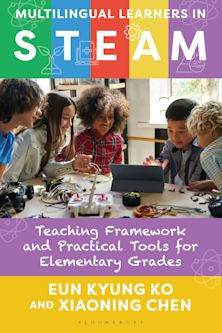Undergraduate Curricular Peer Mentoring Programs
Perspectives on Innovation by Faculty, Staff, and Students
Undergraduate Curricular Peer Mentoring Programs
Perspectives on Innovation by Faculty, Staff, and Students
Description
Curricular peer mentoring is a programmatic approach to enrich student learning and engagement in postsecondary courses in which instructors welcome a more experienced undergraduate student into a credit course they are teaching. The student then serves as peer mentor to the students enrolled. Peer mentors can provide a variety of peer-appropriate, course-specific mentoring, tutoring, facilitation and leadership roles and activities that complement the roles of the course’s instructor and teaching assistants both in classroom settings and beyond. A program provides training and ongoing support for a larger number of peer mentors and instructional teams and manages recruitment and program research and quality. This volume provides research findings, definitions, theories, and practical program descriptions as a foundation for program development and research of undergraduate curricular peer mentoring programs in higher education. This work builds on a long history of higher education program development and collects a significant amount of literature that has previously been scattered.
Table of Contents
Tania S. Smith
Chapter 1: Defining Features of Curricular Peer Mentoring Programs
Tania S. Smith
Chapter 2: Discipline-Focused Peer Mentoring: Peer Teaching in Biology at the University of British Columbia
Carol Pollock
Theory and Practice: Lave and Wenger on Communities of Practice
Tania S. Smith
Chapter 3: Peer Mentoring in a Team-Taught Interdisciplinary Course: Engaging the 21st Century Student Through Peer-Led Learning
Tina Pugliese, Tamsin Bolton, Veronika Mogyorody, Jill Singleton-Jackson, Robert Nelson & Ralph H. Johnson
Theory and Practice: Student Engagement
Tania S. Smith
Chapter 4: Peer Mentoring in Large-scale First-year Programs: Academic Peer Mentors in First-year Courses at the University of Texas at Austin
Jennifer L. Smith
Theory and Practice: Tinto and Wenger on Learning Communities
Tania S. Smith
Chapter 5: Peer Mentoring in a Technical Institution: Undergraduate Mentoring in Software Engineering
Sanjay Goel
Theory and Practice: Vygotsky’s and Bloom’s Theories
Tania S. Smith
Chapter 6: Hosting Peer Mentors in a Senior Interdisciplinary Course: Notes from a Pre-History of Peer Mentoring at the University of Calgary
Marcia Jenneth Epstein
Theory and Practice: Bruffee on Collaborative Learning
Tania S. Smith
Chapter 7: Supporting Peer Mentors: Recruiting, Educating and Rewarding Peer Mentors
Kate Zier-Vogel and Andrew Barry
Theory and Practice: Peer Mentor Education Through Service-Learning
Tania S. Smith
Chapter 8: Case Studies of Conflict and Collaboration: Supporting Teaching Assistants Who Work with Peer Mentors
Bryanne Young
Theory and Practice: Teaching Teams with Graduate and Undergraduate Assistants
Tania S. Smith
Conclusion: Program Development and Sustainability
Tania S. Smith
Product details
| Published | 15 Dec 2012 |
|---|---|
| Format | Ebook (PDF) |
| Edition | 1st |
| Extent | 292 |
| ISBN | 9798216305040 |
| Imprint | Lexington Books |
| Illustrations | 8 BW Illustrations, 6 Tables |
| Publisher | Bloomsbury Publishing |



































